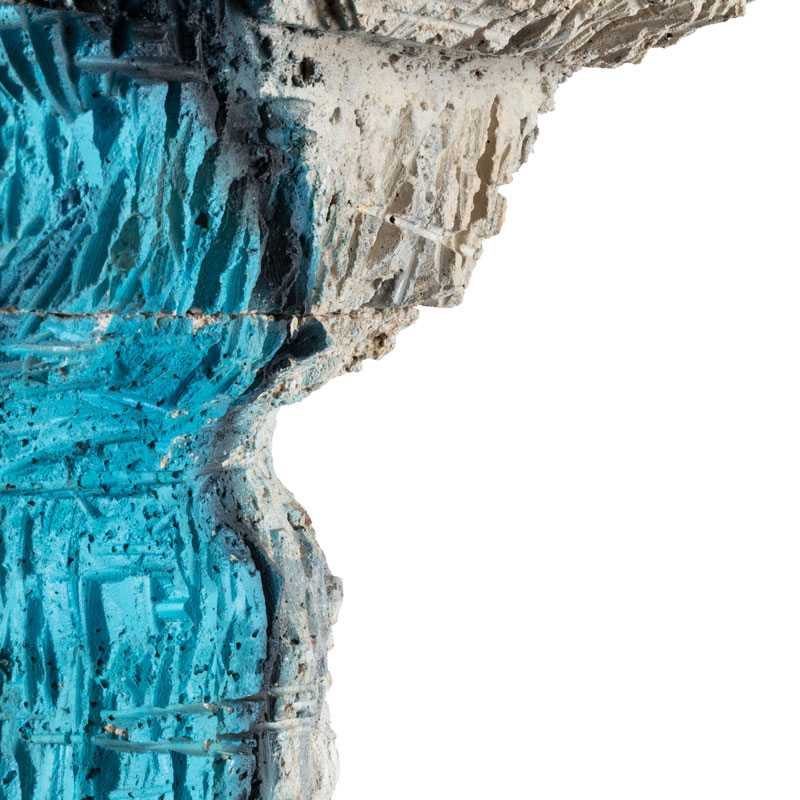ART-PRESENTATION: Damián Ortega-Porous Structures
 Throughout his oeuvre, Damián Ortega’s interests have been sparked by particular situations and everyday objects, which he alters and transforms to raise questions on broader notions, for instance the economic, social and political discourses that articulate matter and the relationships it is encapsulated within. It is precisely matter on numerous levels, from its composition and molecular behaviour to the discourses that shape it or place it in the dynamics of property and hierarchy, that is at the heart of his investigations.
Throughout his oeuvre, Damián Ortega’s interests have been sparked by particular situations and everyday objects, which he alters and transforms to raise questions on broader notions, for instance the economic, social and political discourses that articulate matter and the relationships it is encapsulated within. It is precisely matter on numerous levels, from its composition and molecular behaviour to the discourses that shape it or place it in the dynamics of property and hierarchy, that is at the heart of his investigations.
BY Efi Michalarou
Photo: Gladstone Gallery Archive
Damián Ortega presents a solo exhibition of new sculptures and site-specific works at Gladstone Gallery in New York. Including a mix of works created with sand, cement, brick, clay, and crystals, “Porous Structures” excavates the materiality of permeable structures and objects, and how the cultural, political, and socio-economic implications of manufactured and natural constructions impact humankind in both a deeply personal and universal way. Ortega recontextualizes building materials to highlight how raw matter can be transformed into structures or systems for habitation. “Modern sublease”, a helix-shaped, staircase-like structure made with cement and clay, similarly connects to the artist’s interest in architecture and construction materials. As the viewer moves around the work, small crevices are revealed throughout the staircase, mimicking the architectural structure of a wasp’s nest or the geometry of modernist urban planning, transforming this undulating, wall-like structure into a place for community and collaboration. In his monumental new site-specific work “Irregular emplacements”, which consists of two 7-foot-tall mountainous structures made with sand and cement cubes, Ortega conflates the process of creating sculpture with an economics of positive and negative spaces that the viewer enters into. This installation aims to question what constitutes a sculpture, and highlights the significance of both the physical object on display as well as the negative space surrounding the sculpture. Damián Ortega was born in Mexico City in 1967. He has no formal art education, but was influenced by Gabriel Orozco, who led an experimental art course in Mexico City in the late 1980s and early ’90s. Ortega began his career as a political cartoonist for the leftist newspaper “La Jornada”. “For my father it was more understandable for me to make political art than abstract art, which was very bourgeois,” he notes. “It took eight years for me to play with abstraction, or just not figurative things”. But ultimately Ortega wanted to make art that transcended politics. He visited Gabriel Orozco, son of another, more radical communist, and asked to be mentored. Their weekly lessons turned into legendary “Friday workshops”, which took place between 1987 and 1992 and included Abraham Cruzvillegas, Jerónimo López Ramírez, aka Dr Lakra, and Gabriel Kuri. Influenced by the conceptual ideas of Marcel Duchamp, they found the conservative approach taught in Mexican universities repressive. Recombining and disassembling mass-produced and vernacular artifacts, he charts the constellations of social, economic, and political forces that underlie material culture. In “False Movement (Stability and Economic Growth)” (1999), for example, three oil drums poised atop one another revolve like model planets, their precarious balance and eroded exteriors suggesting the underlying fragility and perhaps imminent collapse of a consumer economy. In “Controller of the Universe” (2007), dozens of axes, chisels, hammers, and saws are suspended from the ceiling in a careful composition that evokes the orchestrated explosion of a cosmic toolbox. Here, tools can be understood as symbols of humanity’s desire to shape and control the world, yet this purpose is ultimately subverted by the subjective ordering of the work’s components. Perhaps Ortega’s most well-known work, however, is the epic “Beetle Trilogy” which consists of an installation, a performance and a film that interweave the personal and the political. In the first, “Cosmic Thing” (2002), Ortega literally deconstructs a Volkswagen Beetle with each part suspended by wire in mid-air, evoking a fragmented mechanic’s diagram. This piece offers a new way of seeing the ‘people’s car’, first developed in Nazi Germany but closely connected with the history of modern Mexico since it was readily available, inexpensive and easy to repair. The second and third works in the trilogy are the performance “Moby Dick” (2004) and the film “Escarabajo” (2005). In his performance, the artist stages a battle between man and machine by attempting to pull the car across a layer of grease to a live soundtrack of “Moby Dick” by Led Zeppelin. In the film, he takes the car on a mythical voyage before finally ‘burying’ it in Puebla, Mexico, one of the last places it was produced.
Info: Gladstone Gallery, 515 West 24th Street, New York, Duration: 1/5-8/6/19, Days & Hours: Tue-Sat 10:00-18:00, https://gladstonegallery.com
